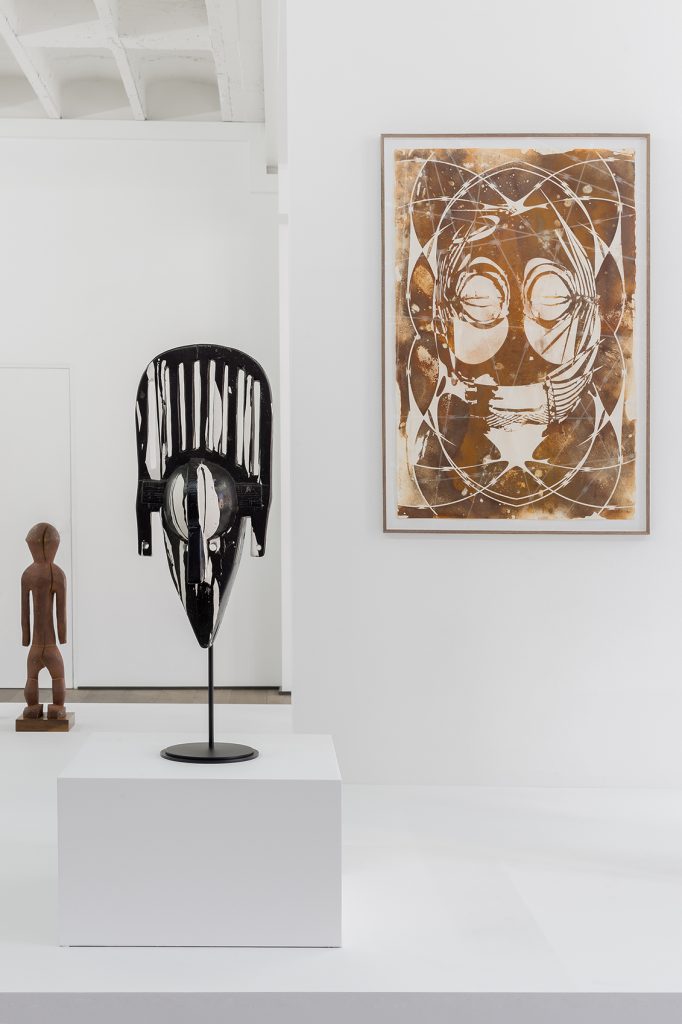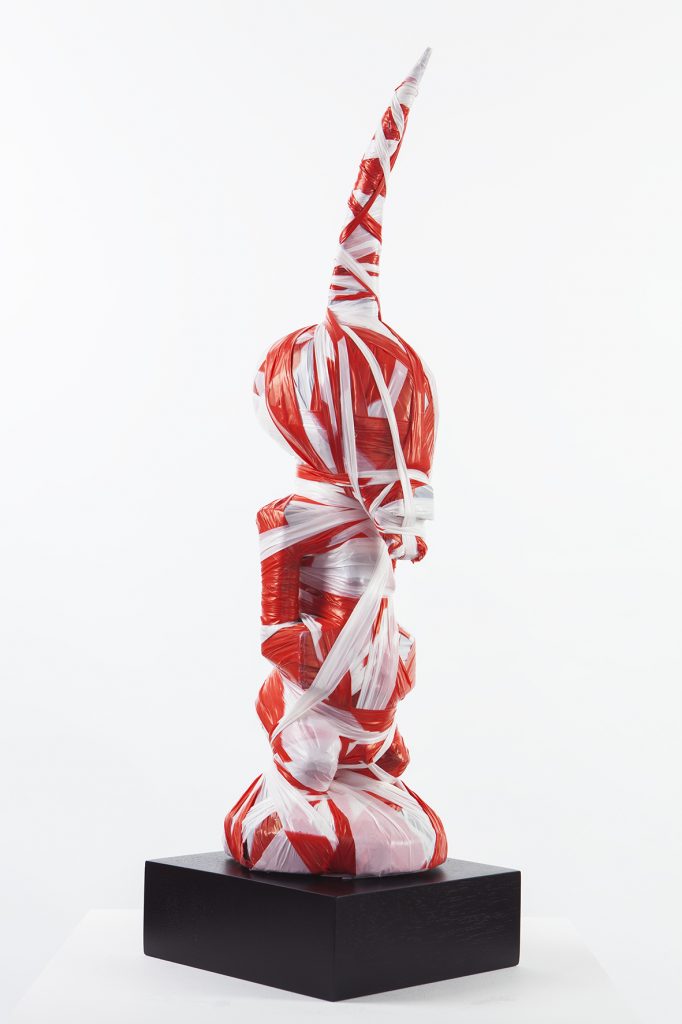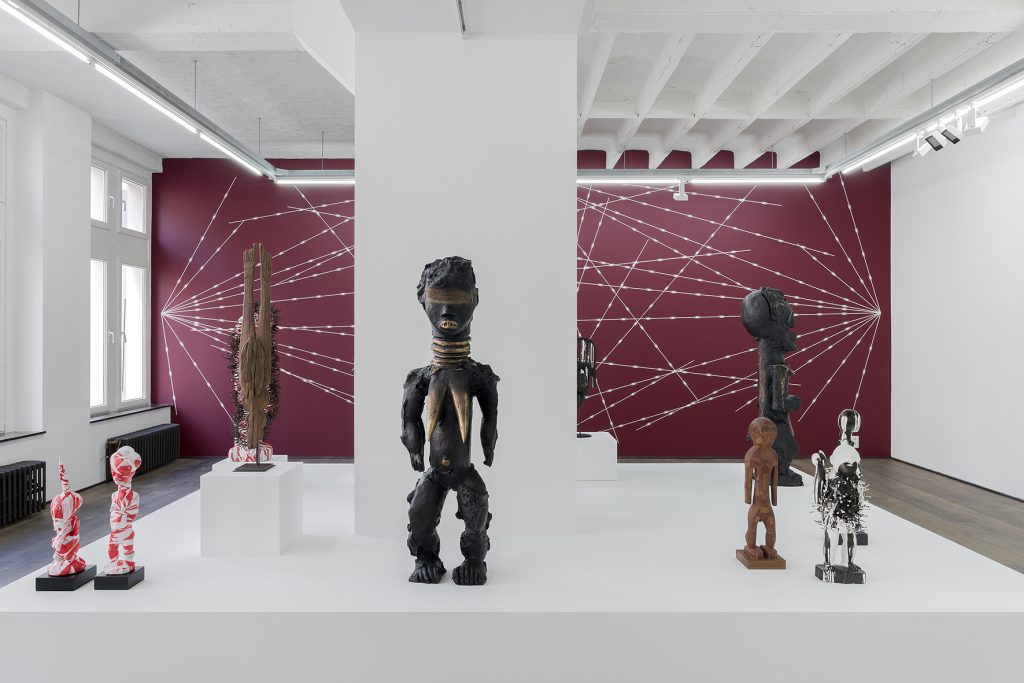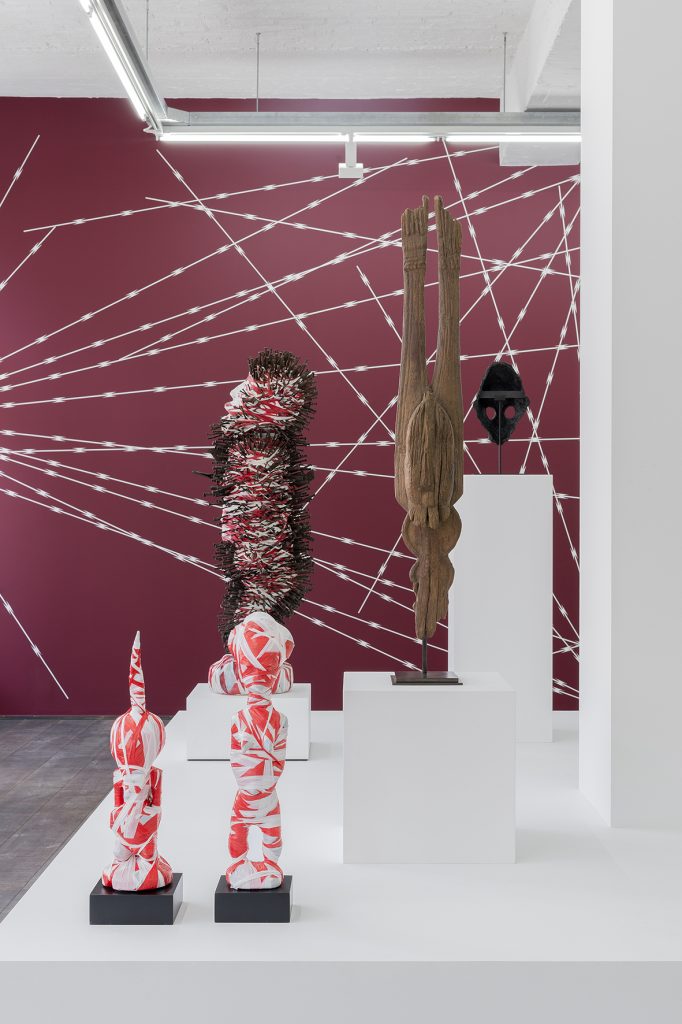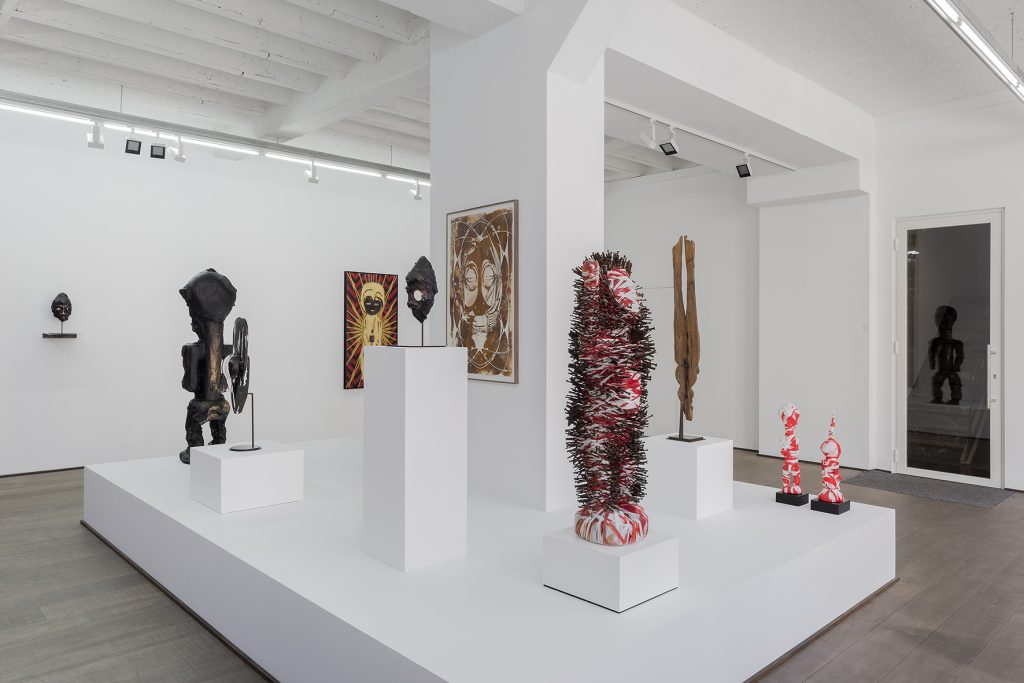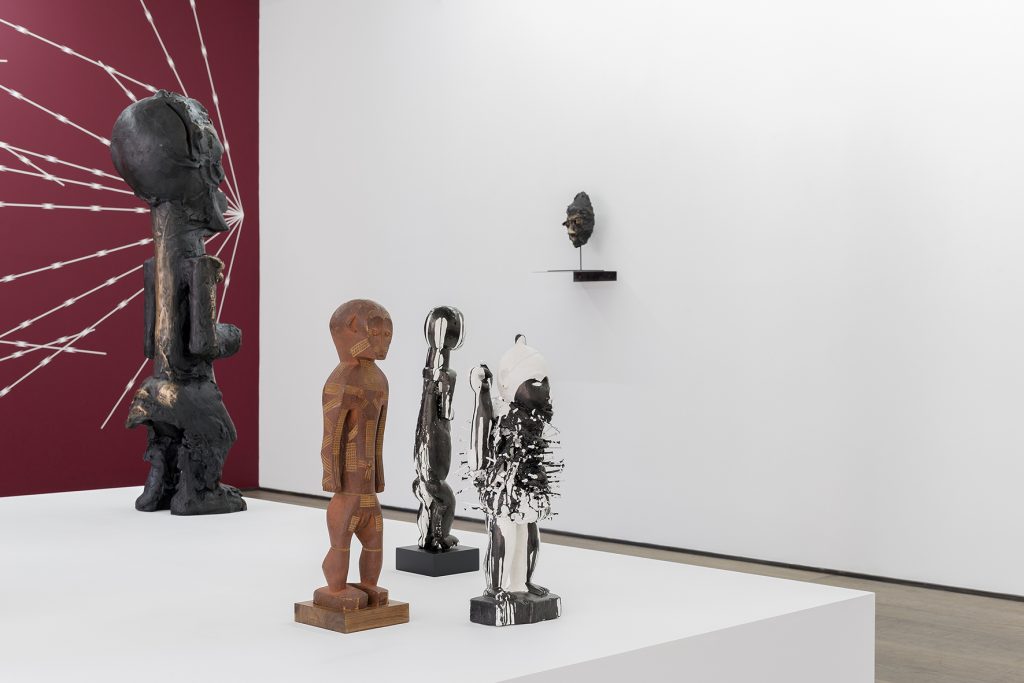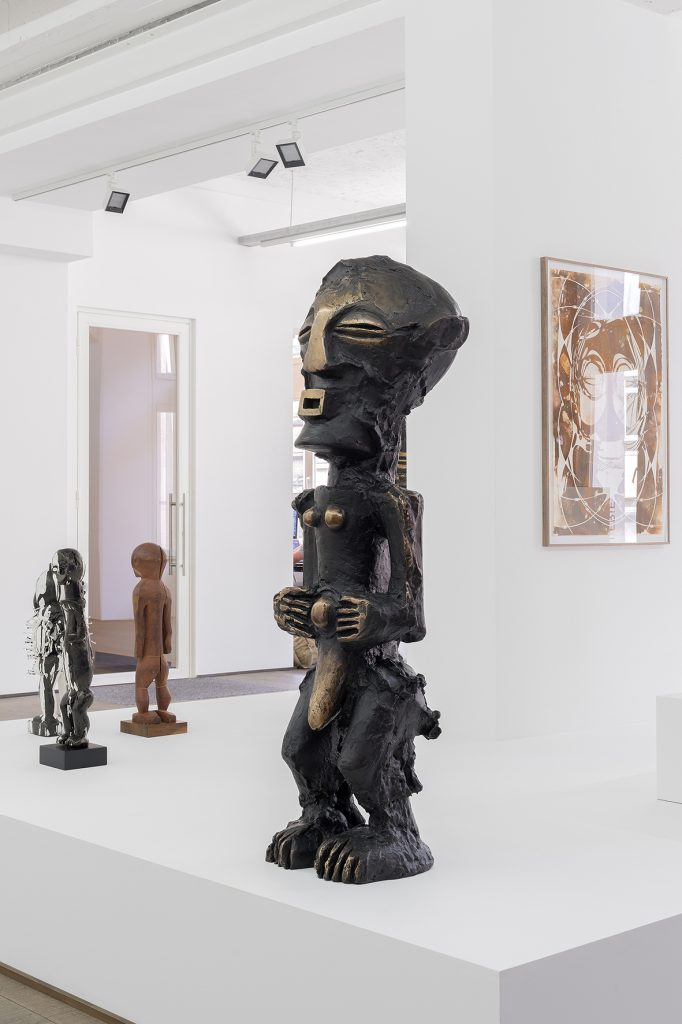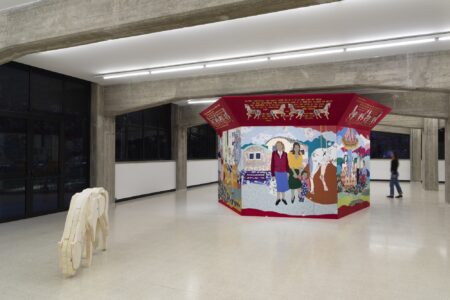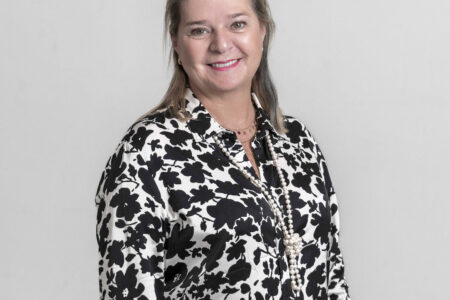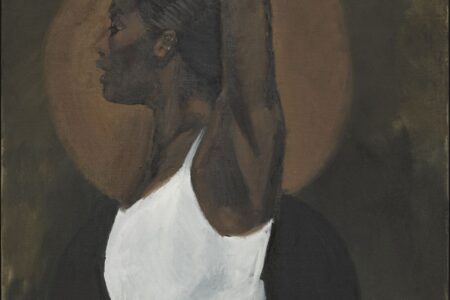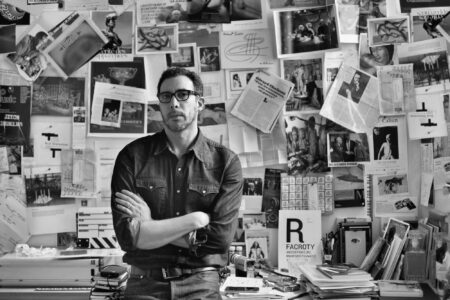Kendell Geers Goes Afropunk
The South-African born, Belgium-based artist presented “A dialogue with history and tradition”
How did African art made by the hands of the Lega, the Songye and the Grebo inspire European avant-garde representatives like Picasso, Malevich and Matisse? That’s the exploration behind AfroPunk, Kendell Geers’ joint exhibition hosted at Didier Claes’s and Rodolphe Janssen’s spaces for the Brussels Gallery Weekend this past September 2017. The South-African born, Belgium-based artist presented a conversation between the source and the contemporary, with sculptures, drawings and paintings that blur the lines between traditional techniques and their more recent counterparts —like collage and 3D printing.
TLmag: What does the “punk” refer to in this context, beyond the use of scissors?
Kendell Geers: I love words that have contradictory meanings, depending on their context. Punk can be considered positive or negative, depending on who is saying it and in relation to what. I love the fact that it derives from the word spunk, meaning life force, a virile embrace of experience. Of course, the exhibition card refers to the classic Sex Pistols’ God Save the Queen design by Jamie Reid. In this instance, though, the Queen happens to be the 16th century Benin Queen Mother Iyoba, a great warrior and sorceress. There are two famous ivory masks depicting Iyoba, one on the British Museum and the other in the Metropolitan Museum, both of which were looted by the Colonial British Army during the Punitive Expedition of 1897.
TLmag: You’ve said the exhibition is “a dialogue with history and tradition.” We’ve been seeing that word, “dialogue”, and its synonym, “conversation”, quite often these days. Why do you think contemporary art is so interested in this type of discussion?
KG: Edmund Burke said that if “you don’t know your history you are doomed to repeat it.” On the other hand, history is written by the winner and when those winners are defeated in turn, history is rewritten by the next winner. I lived through one such rewriting of the so called “historical facts” after the fall of Apartheid. My dialogue is an an iconoclast, believing that absence makes the art grow fonder.
TLmag: That being said, what is your favourite piece of dialogue at AfroPunk?
KG: The contradiction between the traditional and the contemporary, the chance meeting of Sol Lewitt wearing a Pende Mbangu sickness mask at a ball thrown by Stanley Livingstone Kubrick.
TLmag: Where do you think our fascination with masks comes from?
KG: The mask erases the ego and that makes it so much easier to tell the lies you need express in order to have the freedom to tell the truth.
TLmag: Do you think there’s any truth to the position that 3D printing came to solve our responsive need for the tactility of the digital in an increasingly digital world?
KG: Not at all: human beings are fundamentally lazy and would rather spend all day long at the beach, or on the sofa, doing nothing. The recent proliferation of drones and 3D printing means that we will soon be able to order absolutely anything on the phone and have it either delivered by drone directly to the beach towel, or immediately printed by the machine placed on the coffee table where books used to be.
TLmag: In the past five years, how do you think the internet has changed the way we see certain countries in Africa and their contemporary realities?
KG: The internet is mostly fake news, filtered by algorithms and statistics. It is very easy for armies of propaganda engineers behind computers in Russia, Washington, Delhi or Ghent to pretend on social media that they are part of a revolution anywhere in the world. Opinion is for sale. It’s very difficult to know what is true or false, real or fake news today. The future of freedom and democracy is hidden somewhere inside the Dark Web.
TLmag: What importance do you assign to humour in your pieces, especially considering your home country’s recent history and even yours?
KG: I called one of my first monographic books My Tongue in Your Cheek – only humour can save us now that jokes are elected president all around the world.
